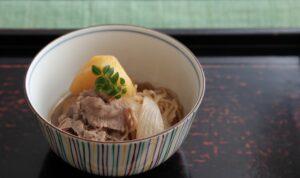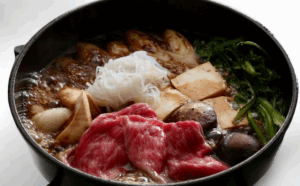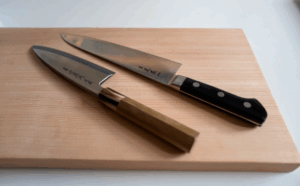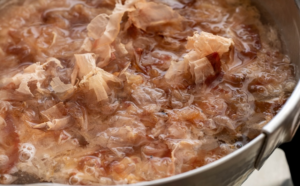Did you know there’s a fish unique to Japan?
It’s called “ayu,” or sweetfish.
Japanese love Ayu because it’s a national fish, endemic to Japan.
It can be found in parts of China and Taiwan, but Japan boasts the largest population of Ayu.
Once you understand how special Ayu is, you’ll appreciate its importance in Japanese culture. Let’s get into this special fish “ayu” this time.
Fragrant Fish
Ayu goes by various names, one of which is “kougyo,” meaning fragrant fish.
Why?
If you ever get the chance, take a whiff. It’s got a unique aroma, kind of like those of cucumbers or watermelons. That’s earned it the moniker “fragrant fish.” As Ayu grow, they feed on diatoms, a type of moss. Their diet gives them this pleasant scent.
Interestingly, the taste of fish varies depending on the river. That’s why, when chefs gather, they often start bragging about the taste of Ayu from their local area. For me, I especially like the taste of Ayu from the Kano River in Shizuoka prefecture, because my father used to take me there for Ayu fishing trips.
Year Fish
Another name for Ayu is “nengyo,” which means “year fish” in Japanese.
Ayu are known to have a short lifespan, typically living only for a single year. They are born in the spring, mature during the summer, decline in the autumn, and perish in the winter.
Maybe this whole fatalist idea resonates with the Japanese sentiment of cherishing something fleeting.
Can They Go to the Sea?
They are grouped as part of the the salmon family. Therefore, they are relatives of salmon and trout and can go to the sea. Yet, unlike larger fish like salmon, they do not venture out into the open sea.
They are born in rivers and descend into the sea once. They swim around the bay area, and as soon as they grow to a certain size, they swim up the river.
Ayu fishing season begins around June when the fishing ban is lifted. Around this time, people fishing with about 10-meter rods in rivers are often the ones engaged in Ayu fishing.
Fishing with Ayu for Ayu
The Ayu fishing method is called “Tomozuri,” which means “fishing for Ayu with Ayu.” This is a unique and interesting fishing technique.
As mentioned earlier, Ayu feed on moss, namely the one that sticks to rocks. So it’s technically impossible to use moss as bait. Each Ayu has its own territory, usually centered around moss-covered rocks, which they defend from intruders. This territorial behavior is cleverly used in Tomozuri fishing.
For starters, we buy cultivated decoy Ayu and attach a “nose ring” to prevent escape, plus a hook attached to their rear also. The wild Ayu in the river will then mistake the decoy Ayu as intruders and try to drive them away by ramming into them. While they’re doing so, they get caught on the hook attached to the decoy Ayu’s tails. This Tomozuri method makes the most of the territorial instincts of Ayu.
Catching the first Ayu is important because the fish is used to the river and energetic. By attaching a nose ring and releasing it back into the water, the next catch becomes a breeze. That’s why the first Ayu in Tomozuri fishing is really the key.
There was a time when I failed to catch a single one, leaving me with only the three decoy Ayu I had purchased. Unlike other types of fishing, the nice thing about Ayu fishing is that you’ve got at least something to take home even if you don’t catch anything.
My foray into Ayu fishing was great, because I got to fish with locals in the crystal-clear streams of Shikoku while living in Shodoshima Island, plus I ended up making some lasting friendships, which was a pretty neat reward.
How to Enjoy Ayu
The best way to enjoy Ayu is by grilling it with salt.
Traditionally, Ayu is skewered and grilled, but a straight skewer doesn’t present it appetizingly. Instead, we’ve got a method called “climbing skewer,” where the fish ascends over a river with its tail raised—a technique that takes some getting used to. Once you get the hang of it though, you can skewer a lot of fish in the same graceful posture.
After skewering, there’s a key step called “makeup salt,” delicately applying salt to the Ayu, just as you would put on makeup. Without this step, the dorsal fin, tail fin, ventral fin, and pectoral fins would all likely turn black during grilling. So, the makeup salt not only enhances flavor but also serves as an essential technique to preserve the fish’s fins and make sure you achieve a visually appealing look.
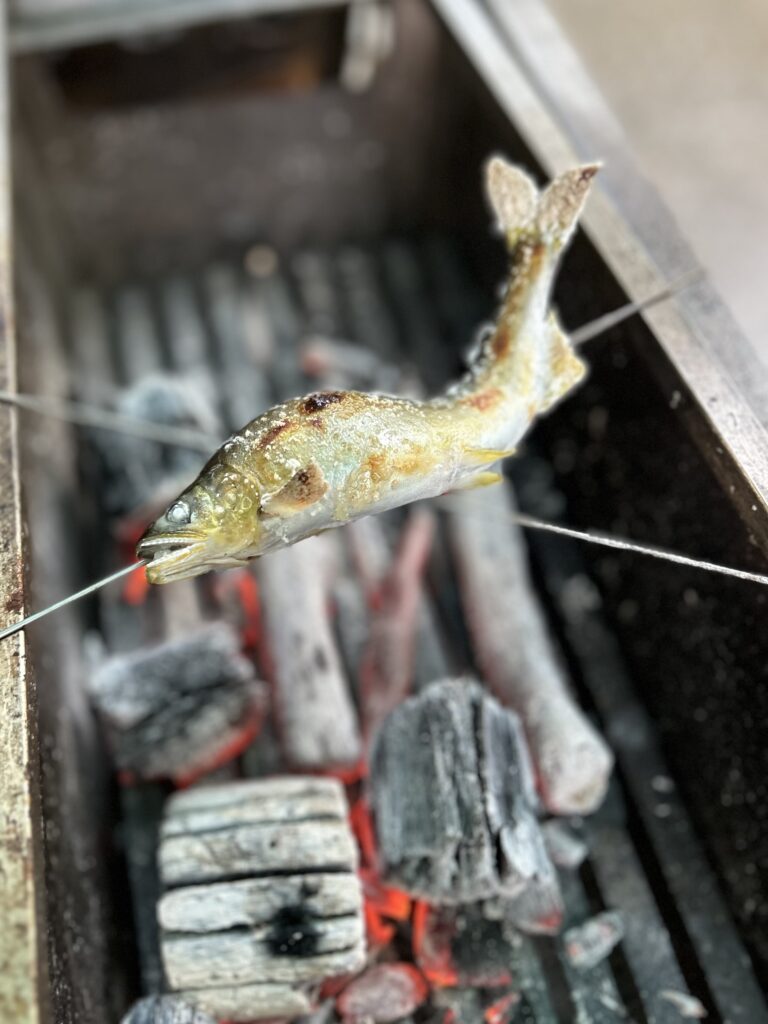
In my cooking class in Akasaka, I teach about Ayu in our most basic class. We set up a tent in front of the cooking school, start a charcoal fire there, and grill skewered Ayu. Using charcoal helps you learn basic grilling skills, making it a great way to get started.
As the fat from the grilled Ayu drips onto the charcoal, smoke rises, smoking the Ayu in the process and adding a delicious flavor to the fish.
It’s always a lot of fun grilling with everyone and enjoying freshly grilled fish. It’s one of my favorite classes.
Ayu is a species endemic to Japan and has been a part of Japanese cuisine since ancient times, even appearing in mythology. Please enjoy it as a seasonal delicacy, available from June until early fall in the country.



